The law for calculating the cross-section of an electric wire – equations and examples
The law for calculating the cross-section of an electric wire – equations and examples

Contents
When installing an electrical system, choosing the correct size of electrical wire is essential to ensure efficient and safe power distribution. Understanding the electrical wire cross section calculation law is essential to determine the appropriate wire size based on the electrical load, cable length, and safety standards. This article will guide you through the basic concepts and calculation formulas used to determine the size of electrical wire required for a specific application or project, allowing you to achieve optimal electrical installations.
What is wire gauge and why is it important?
The cross section of electrical wire refers to the size of the cross section of the conductor used to transmit electricity. It is measured in units of area, usually in square millimeters (mm²) or AWG (American Cable Gauge) in some countries. The cross section of an electrical wire is important because it determines the wire’s ability to carry electrical current safely and efficiently.
How it works?
When an electric current flows through a wire, a certain amount of heat is generated due to the resistance of the conductor material. If the cross-section of the wire is insufficient for the electrical load, the resulting heat may build up and cause the wire to overheat, increasing the risk of fire and system failure. Therefore, it is necessary to calculate the appropriate electrical wire cross-section to avoid overheating problems and ensure safe and efficient operation of electrical installations.
Units of measurement for electrical wire cross-section
The units of measurement commonly used to express the cross-section of an electrical wire are as follows:
– Square millimeter (mm²) : The most common unit of measurement used in many countries. Indicates the conduction section of the wire in square millimeters. For example, a 2.5 mm² wire means that it has a cross section of 2.5 square millimeters .
– AWG (American Wire Gauge) : This is a unit of measurement used primarily in the United States and Canada. AWG uses a reversed numbering system, which means that the smaller the AWG number, the larger the cross-sectional area of the wire. For example, 10 AWG wire has a larger cross section than 14 AWG wire .
note:
It is important to note that direct conversion between units of measurement may vary depending on the conductor material used (copper, aluminum, etc.) and the specific regulations of each country. It is therefore advisable to consult local standards and regulations for accurate use of electrical wire cross-section units.
Factors for calculating the electrical wire cross-section
Factors that must be taken into account in calculating the electrical wire cross-section:
Electrical load current
How do you determine the total electrical load of your system?
– Determining the total electrical load of your system is key to calculating the proper wire gauge. Electrical load is the amount of electricity consumed by your electrical appliances and equipment. It is measured in amperes (A) and can be obtained by adding the current ratings of all devices connected to the circuit.
To determine the total electrical load, you can refer to the appliance specifications to find out their current rating. Then add these values to get the total circuit load. It is important to consider both the current load and the potential for future extensions or hardware additions in order to choose a wiring section that can support the current and future needs of the system.
Length of electrical cables
How does cable length affect wire gauge?
The length of the cable is an important factor that must be taken into account when calculating the electrical wire cross-section. The longer the cable, the more resistance there is in the connector, which can lead to voltage loss. Voltage loss can affect the performance of electrical devices and cause an unacceptable voltage drop at the end of the circuit.
– To reduce voltage loss, it is recommended to choose a larger wire gauge for longer cables. You can use voltage drop calculation tables or calculation software to determine the appropriate section depending on the cable length and electrical load.
Low voltage
What is voltage drop and how to reduce it?
– Voltage drop occurs when electricity encounters resistance in a conductor, causing a voltage drop between the point of supply and the point of consumption. Excessive voltage drops can affect the proper operation of electrical appliances and equipment, especially those that require constant voltage.
– To minimize voltage drop, it is important to choose a suitable wire gauge that minimizes resistance. Specific equations can be used to calculate voltage drop as a function of cable length, conductor material resistance, and electrical load. In general, it is recommended to keep the voltage drop below a certain value, usually around 3% for domestic installations and 5% for industrial installations.
The law for calculating the section of an electric wire
It is noteworthy that there are different methods used to calculate the cross-section of an electrical wire as a function of the electrical load. One of the most common methods is to refer to specific schedules of electrical cables and wires, use them extensively and become familiar with them.
Basic law P = U x I
The law P = U x I is a basic equation used to calculate electrical power (P) as a function of voltage (U) and current (I) . Although this formula does not directly give the wire cross-section, it can be used to determine the total electrical load of a circuit, which is an essential factor in selecting an appropriate electrical wire cross-section.
To use this equation in the context of calculating the cross-section of a wire, you need to know the total power (P) in watts (W) of the electrical appliances and equipment in the circuit, as well as the voltage (U) in volts (V) . Then you can calculate the current (I) using the law I = P/U .
Once you determine the current, you can refer to specific tables or standards to choose the size of wire that can safely carry that current. These tables or standards usually provide a relationship between the cross section of the wire, the current rating, and the properties of the conductor material (for example, copper or aluminum ).
Electricity wire correction transactions
Wire rectification coefficients are values that affect a cable’s ability to carry a given current. These parameters are determined by several variables, such as the type of cable insulation (e.g., PVC or XLPE ), ambient temperature, the way the cable is laid (e.g., in a pipe, embedded in soil, or in the air), as well as its location (on walls or buried underground) and the depth of its burial.
These variables must be taken into account when designing an electrical wire section. Using a correction factor of approximately 0.8 , which may vary depending on the manufacturer’s specifications, you can adjust the cable cross-section according to these factors.
It is recommended to consult the cable catalogs provided by the manufacturers for detailed information on the correction coefficients of each type of cable. This information will allow you to choose the appropriate cable cross-section depending on the specific installation conditions.
– Correction coefficients table:
| 55 | 50 | 45 | 40 | 35 | 30 | 25 | 20 | 15 | temperature |
| 0.55 | 0.66 | 0.75 | 0.84 | 0.92 | 1 | 1.07 | 1.15 | 1.21 | PVC |
| 0.72 | 0.78 | 0.84 | 0.9 | 0.95 | 1 | 1.05 | 1.1 | 1.15 | XLPE |
| 55 | 50 | 45 | 40 | 35 | 30 | 25 | 20 | 15 | temperature |
| 0.55 | 0.63 | 0.71 | 0.77 | 0.84 | 0.89 | 0.95 | 1 | 1.05 | PVC |
| 0.71 | 0.76 | 0.8 | 0.85 | 0.89 | 0.93 | 0.96 | 1 | 1.04 | XLPE |
Application of the law for calculating the cross-section of an electric wire
Example 1: How to calculate wire size for a standard residential installation
Suppose you want to calculate the wire size for an electrical circuit in a standard residential home. This is the relevant data:
- Total power of devices: 5000 watts
- Electrical voltage: 230 volts
- Average power factor: 0.9
- Normal room temperature: 25°C
– Step 1: Calculate the electrical load
Total power 5000 watts. Divide this value by the voltage to get the current:
I = P / U = 5000 W / 230 V = 21,74 A
– Step 2: Choose a wire clip
Consult appropriate standards and tables to select a cross section of wire that can carry a nominal current of approximately 21.74 A. According to local standards, it is recommended to use a cross section of at least 4 mm² for such a load.
Table for determining the cross-sectional area of the wire

Example 2: How to calculate the cable cross-section for an industrial facility with high loads
Now imagine that you want to calculate the cross-section of wires and cables for an industrial facility with high loads. This is the relevant data:
- Total power of devices: 15000 watts
- Electrical voltage: 400 volts
- Average power factor: 0.8
- High ambient temperature: 40°C
– Step 1: Calculate the electrical load
Total power is 15000 watts. Divide this value by the voltage to get the current:
I = P / U = 15000 W / 400 V = 37,5 A
– Step 2: Choose the wire section
In this case, due to the high load, it is recommended to consult industry standards and tables to choose the appropriate wire section. According to applicable standards, a minimum of 10 mm² is recommended for such load and environmental conditions.
The law for calculating the cable cross-section for a three-phase load
To calculate the appropriate cable cross-section for a three-phase load, the law calculation for the cable cross-section of this type is used, and takes into account both the total power (in kilowatts) and the voltage (in volts) of the system.
The general law for calculating the three-phase cable cross-section is as follows:
Section (mm²) = (Power (kW) x 1000) / (Voltage (V) x √3 x Correction factor)
In this law:
- Power is expressed in kilowatts (kW).
- Voltage is expressed in volts (V).
- √3 is the correction factor for three-phase systems and is equal to about 1.732.
– Here is an example to illustrate the cable cross-section calculation for a three-phase load:
Suppose we have a three-phase load with the following specifications:
- Total power: 50 kW
- Voltage: 400 volts
- Correction factor: 0.9
Let’s apply the process:
Section (mm²) = (50 kW x 1000) / (400 V x √3 x 0,9)
Section (mm2) = (50 kW x 1000) / (400 V x √3 x 0.9)
Now we will calculate the cable cross-section:
Section (mm²) = 50,000 / (400 x 1.732 x 0.9)
Section (mm²) = 50,000 / (400 x 1.732 x 0.9)
Section (mm2) ≈ 40.86 mm²
For this three-phase load, a cable cross-section of approximately 40.86 mm² is recommended using these specified values.
What is the resistance of copper and aluminum?
The electrical resistance of copper and aluminum differs due to their physical properties and conductivity. Below are the approximate resistance values for copper and aluminum:
Resistivity of copper
The electrical resistivity of copper is generally estimated to be about 0.0175 ohms per square millimeter per meter (ohm/mm²/m) at 20°C . This means that for every square millimeter of cross-section, the resistance of copper is about 0.0175 ohms per meter .
Aluminum resistance
The electrical resistance of aluminum is higher than that of copper. It is generally estimated to be about 0.0282 ohms per square millimeter per meter (ohm/mm²/m) at 20°C. This means that for every square millimeter of cross section, the resistance of aluminum is about 0.0282 ohms per meter .
These values are approximate and may vary slightly depending on the purity of the material and other factors. In addition, resistance can also vary depending on temperature. These values are often used as a reference in cable area and voltage drop calculations, but it is recommended to consult location-specific standards and specifications for accurate and up-to-date values.
The correct selection of electrical wire cross section and size is critical to ensuring a reliable and safe electrical installation. By understanding the rule for calculating the section of electrical wire , you can choose the appropriate wire size for your electrical system. Always be sure to follow safety standards and consult a professional if in doubt. Properly sized electrical installations will ensure efficient distribution of electricity in the application to be powered, minimizing power loss and avoiding electrical hazards and damage to electrical equipment.
If you have any inquiry, please contact us freely and we will be happy to serve you.

Jezli website for purchasing electrical appliances
When we say Jeezly website, we are talking about one of the most famous Arab websites that was able, in a very short period of time, to achieve a very large demand for purchases from it by people from various parts and sectors of the Arab world.
On the Jeezly website, you will find a joint look and all the products that you may need in your home, starting with those for kitchens or bathrooms, but even those for gardens, you will find them on this wonderful site.
So, if you were lost before and did not know where to go to buy your products on the Internet, now you have the perfect solution, and all you have to do is go to the Jezli website and start choosing the products you want.
 What are the features of Jeezly ?
What are the features of Jeezly ?
Since we are talking about a site that is preferred by many people around the world, there is no doubt that it is a site full of various features and characteristics. Therefore, we have decided to devote our next paragraph to pointing out the most prominent features of the Jezli site.
One of the most prominent features of the site is the proportionality of prices. On the Jeezly website, you do not have to worry about the imaginary prices of the products, as is the case with most sites that display their products on the Internet.
The price of delivering products is very reasonable and not expensive, and the site accepts delivery to various countries, without forgetting that it accepts free shipping on some products.
One of the features of the site is also the high quality of its products, as it is impossible to find a poor quality product. Rather, the Jezli website deals with the major companies, Philips, for example, and other famous brands, so you must remove from your mind the idea of the poor quality of one of the products. Another advantage of the site is that it does not specialize in one type of product, but rather you will find various types of products on it, for example, electrical appliances, hand tools, mechanical devices, paints, packages for establishing apartments, and many other types.
Jeezly website also accepts what is known as the shopping cart, which makes it easy for you to filter the products you want to buy and put them in one package in order to be able to pay with the click of a single button.
Accepts multiple payment methods.
We are pleased that you visit our social media pages, where we publish exclusive offers on our website.
Our Facebook page is here .
Our Twitter account is here .




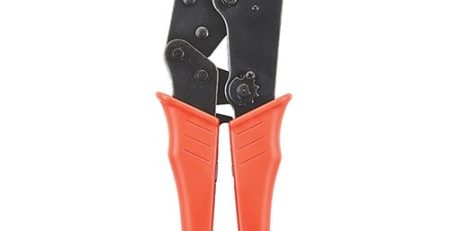


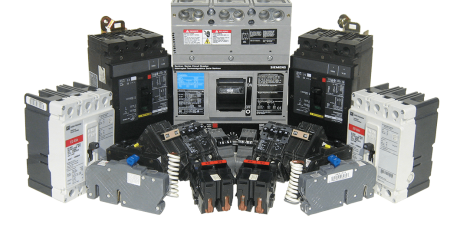
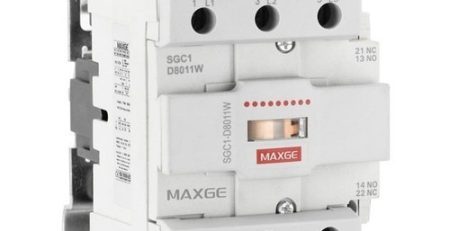

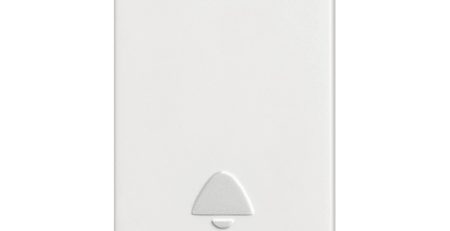
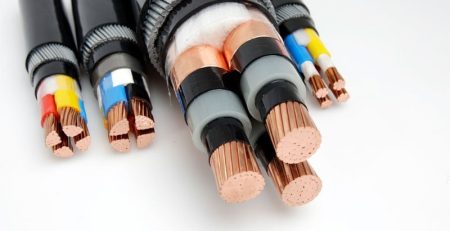


Leave a Reply
You must be logged in to post a comment.